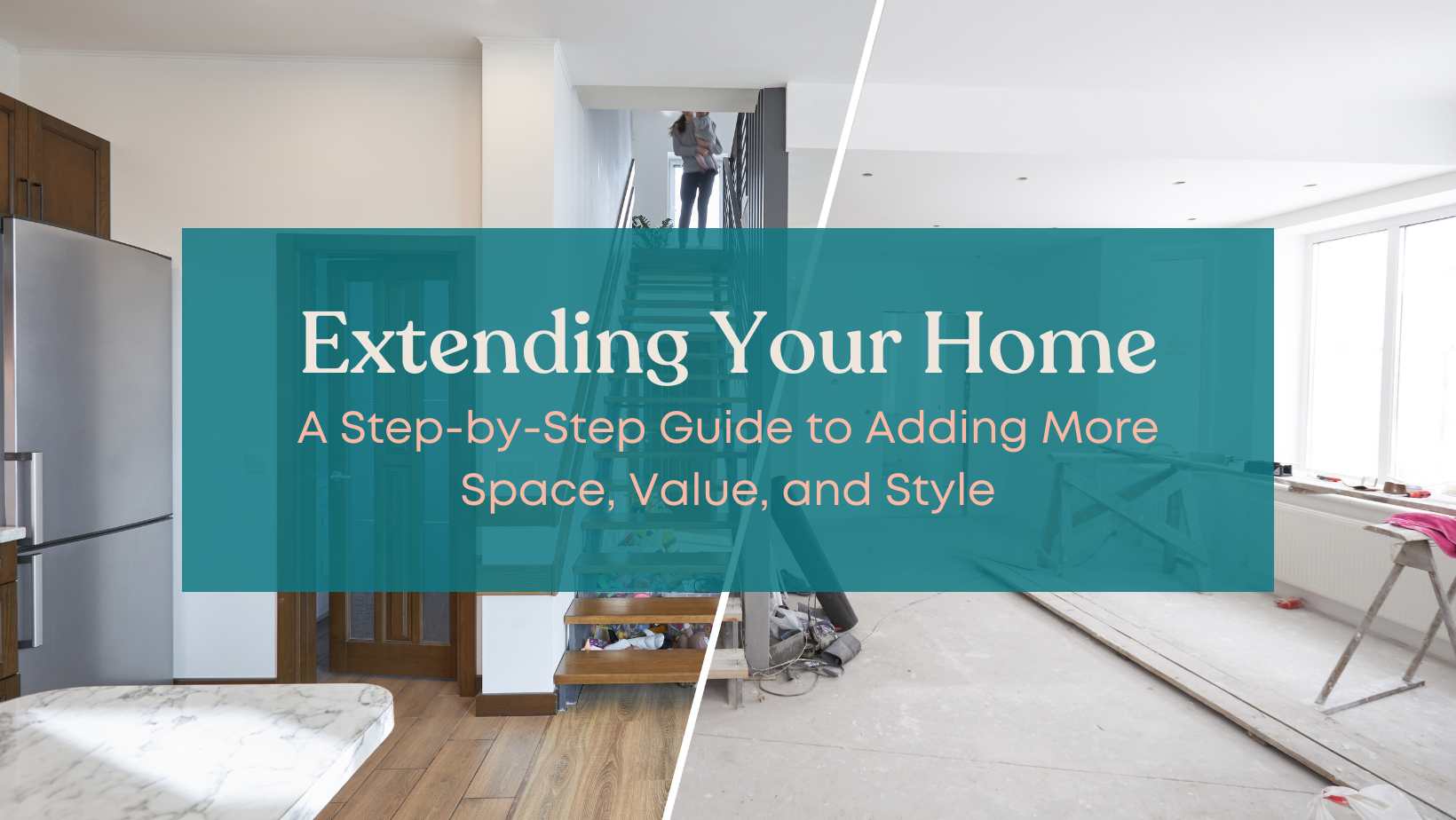Whether you’re extending your home to sell or extending to stay, adding more space can transform how you live and boost your sale price when it’s time to move.
Research by Nationwide found that a loft conversion with a double bedroom and en-suite bathroom can add 25% to the value of a typical three-bedroom house, so the right project is money well spent.
With that in mind, this week’s blog unpacks the different stages of the process of extending your home, including:
- Dealing with the local authority
- Engaging an architect
- Choosing a builder
- Bulletproof budgeting
- Living in a building site
Whether you've already chosen how you’re extending your home or just playing with the idea, this step-by-step guide takes you through the journey with all the info you need.
DEALING WITH YOUR LOCAL AUTHORITY
Whether you’re extending your home or converting an existing space, you’ll need to meet the criteria set by your local authority to get permission and obtain a completion certificate.
You can check your council’s website or speak to their planning department for information on:
- How to submit an application, along with frequently asked questions, to have a clear picture of the process.
- The type of consent you need, whether full planning permission or the faster building regulations approval for smaller extensions and loft conversions.
- Whether your project needs to be in keeping with the original style of your home, or if you’re able to do something more modern.
In terms of timescale, building regulations approval generally takes around five weeks to process, while a full planning application will usually take a couple of months to receive permission.
ENGAGING AN ARCHITECT
Although it’s not a legal requirement to use an architect to seek planning permission or building regulations approval, their expertise can transform your project’s design and success.
An excellent local architect can:
- Provide creative solutions to maximise your space and suggest materials to elevate your project with a special sense of individuality, potentially adding thousands more in value.
- Prepare detailed drawings, including the location of heating, electrical sockets, lighting, and light switches, and then work with your builder to ensure those plans are followed precisely.
- Liaise with the local authority in the initial application stage and then with your builder during the works to solve problems quickly and ensure that everything stays on track.
You can find an architect near you through the Architects Registration Board, and a good one will always be happy to show you their completed projects and put you in touch with previous clients.
CHOOSING A BUILDER
Extensions are a big ticket item, and finding a builder you can trust can be daunting. But you can minimise stress and surprises and find the perfect contractor with the following preparation.
- Not much beats a recommendation, so ask around friends, family, neighbours and local estate agents, or search the Federation of Master Builders website for its members.
- Speak to two or three of a firm’s previous customers, preferably from at least a year ago, and see if you can visit the property to check the quality of workmanship and how well it’s lasted.
- Ask about payment arrangements, from upfront deposits to interim instalments and final sums, together with what materials the builder will buy and which items you need to order.
Finally, remember that builders tend to start at 8am to avoid rush-hour traffic, so whatever your regular schedule, it makes sense to get your morning routine out of the way before they arrive.
BULLETPROOF BUDGETING
The key to a stress-free building project is meticulous budgeting to minimise the potential for mid-project financial shocks. So whether you’re remortgaging or using savings, remember to:
- List every last detail of your expenses, from the cost of a builder to the price of a power socket, to see if your budget is enough or where you can cut back or defer final jobs.
- Factor in a contingency fund of around 15% of the project cost to allow for unexpected hitches or making changes to the design or finishes - room to flex always helps.
- Get all the money in place at the start of the project to avoid running out of funds before work is complete - this level of peace of mind is priceless.
Finally, if costs are a bit tight, you could save some cash by doing some classic DIY jobs yourself, like painting walls or laying a floating timber floor.
LIVING ON A BUILDING SITE
If there's one guarantee when having the builders in, it's that there will be dust. So use protective sheets on floors to avoid treading in the dirt, and over doorways to minimise the spread. Then:
- Clear any spaces where your builders will be working to optimise access, minimise damages and save them time so they can start as soon as they arrive.
- Box up items from the area your builders will be working in and store them out of the way, either at home or in a rented storage unit if space is tight.
- If you’re having a kitchen remodel, ask your builders to create a temporary setup of the washing machine and sink, perhaps even a worktop and hob. Expect to wash up in the bath.
- Unless you have a driveway, you’ll need to block parking spaces outside your home for vans, deliveries, and maybe a skip, so check your local authority’s permit requirements.
To end, remember that your neighbours will also be living with the comings and goings of your builders, so it’s a nice gesture to give them some advance notice of your plans.
Are you thinking of extending your home?
Making big changes is an exciting time, and everything you do will affect your home’s value, so why not optimise your plans for the lifestyle you want today and the best result whenever you sell?
We’d love to hear about your ideas and share what adds the most value to homes for sale in Wickford and Benfleet, so call us on 01268 944104 or email us at hello@vesta-essex.co.uk for a no-strings chat.


 By
By 
 By
By 


Share this with
Email
Facebook
Messenger
Twitter
Pinterest
LinkedIn
Copy this link